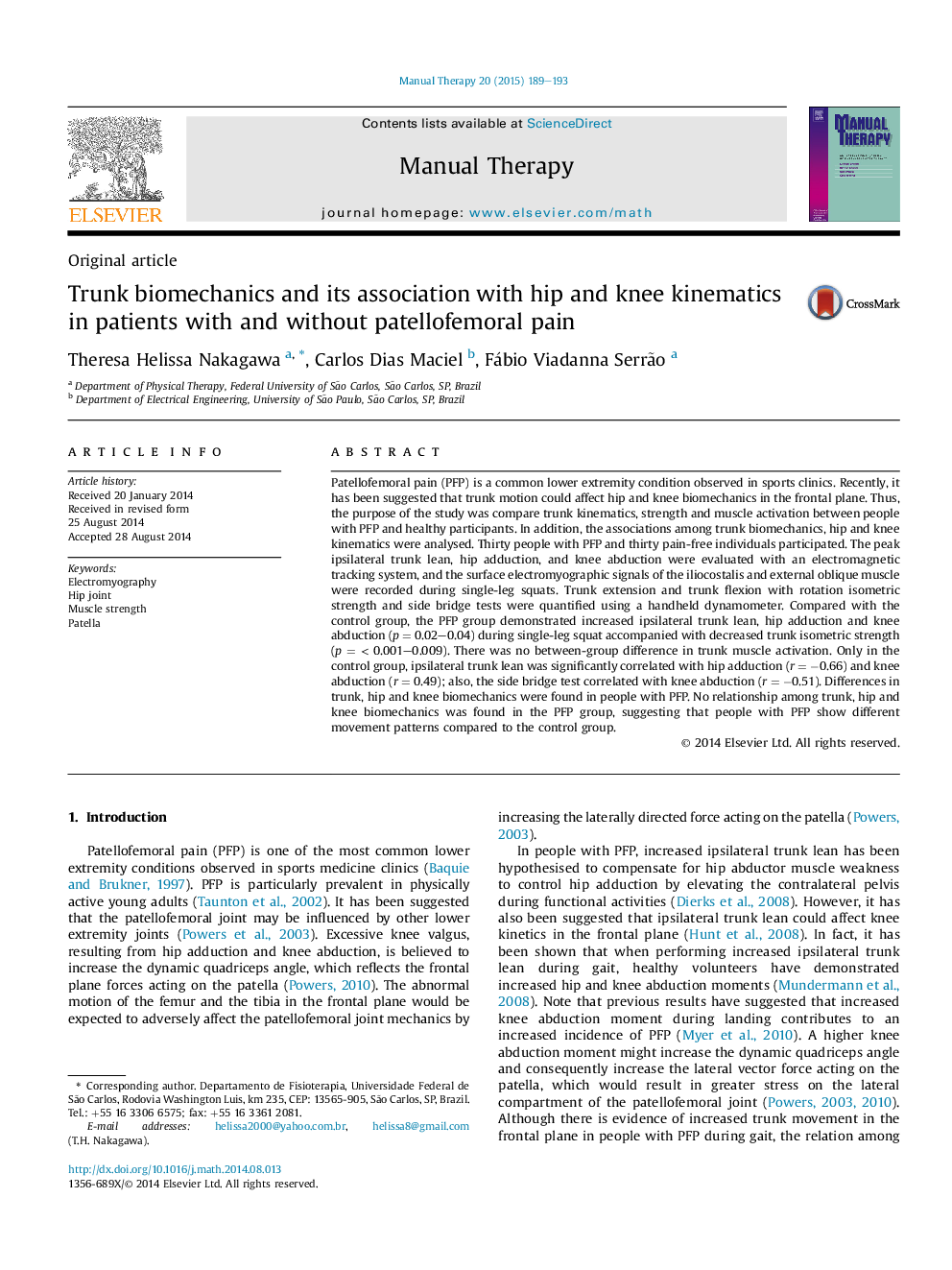| کد مقاله | کد نشریه | سال انتشار | مقاله انگلیسی | نسخه تمام متن |
|---|---|---|---|---|
| 2625086 | 1135922 | 2015 | 5 صفحه PDF | دانلود رایگان |
Patellofemoral pain (PFP) is a common lower extremity condition observed in sports clinics. Recently, it has been suggested that trunk motion could affect hip and knee biomechanics in the frontal plane. Thus, the purpose of the study was compare trunk kinematics, strength and muscle activation between people with PFP and healthy participants. In addition, the associations among trunk biomechanics, hip and knee kinematics were analysed. Thirty people with PFP and thirty pain-free individuals participated. The peak ipsilateral trunk lean, hip adduction, and knee abduction were evaluated with an electromagnetic tracking system, and the surface electromyographic signals of the iliocostalis and external oblique muscle were recorded during single-leg squats. Trunk extension and trunk flexion with rotation isometric strength and side bridge tests were quantified using a handheld dynamometer. Compared with the control group, the PFP group demonstrated increased ipsilateral trunk lean, hip adduction and knee abduction (p = 0.02–0.04) during single-leg squat accompanied with decreased trunk isometric strength (p = < 0.001–0.009). There was no between-group difference in trunk muscle activation. Only in the control group, ipsilateral trunk lean was significantly correlated with hip adduction (r = −0.66) and knee abduction (r = 0.49); also, the side bridge test correlated with knee abduction (r = −0.51). Differences in trunk, hip and knee biomechanics were found in people with PFP. No relationship among trunk, hip and knee biomechanics was found in the PFP group, suggesting that people with PFP show different movement patterns compared to the control group.
Journal: Manual Therapy - Volume 20, Issue 1, February 2015, Pages 189–193
